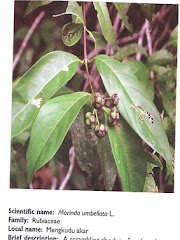hen the locus for a gene for a particular trait or disease lies on the X chromosome, the disease is said to be X-linked. The inheritance pattern for X-linked inheritance differs from autosomal inheritance only because the X chromosome has no homologous chromosome in the male, the male has an X and a Y chromosome. Very few genes have been discovered on the Y chromosome.
The inheritance pattern follows the pattern of segregation of the X and Y chromosomes in meiosis and fertilization. A male child always gets his X from one of his mother's two X's and his Y chromosome from his father. X-linked genes are never passed from father to son. A female child always gets the father's X chromosome and one of the two X's of the mother. An affected female must have an affected father. Males are always hemizygous for X linked traits, that is, they can never be heterozygoses or homozygotes. They are never carriers. A single dose of a mutant allele will produce a mutant phenotype in the male, whether the mutation is dominant or recessive. On the other hand, females must be either homozygous for the normal allele, heterozygous, or homozygous for the mutant allele, just as they are for autosomal loci.
When an X-linked gene is said to express dominant inheritance, it means that a single dose of the mutant allele will affect the phenotype of the female. A recessive X-linked gene requires two doses of the mutant allele to affect the female phenotype. The following are the hallmarks of X-linked dominant inheritance:
• The trait is never passed from father to son.
• All daughters of an affected male and a normal female are affected. All sons of an affected male and a normal female are normal.
• Matings of affected females and normal males produce 1/2 the sons affected and 1/2 the daughters affected.
• Males are usually more severely affected than females. The trait may be lethal in males.
• In the general population, females are more likely to be affected than males, even if the disease is not lethal in males.
The following Punnett Squares explain the first three hallmarks of X-linked dominant inheritance. X represents the X chromosome with the normal allele, XA represents the X chromosome with the mutant dominant allele, and Y represents the Y chromosome. Note that the affected father never passes the trait to his sons but passes it to all of his daughters, since the heterozygote is affected for dominant traits. On the other hand, an affected female passes the disease to half of her daughters and half of her sons.
Father's Gametes Father's Gametes
XA Y X Y
Mother's
Gametes X XXA XY Mother's
Gametes XA XAX XAY
X XXA XY X XX XY
Figure 1. Affected father x normal mother. Figure 2. Affected mother x normal father.
Males are usually more severely affected than females because in each affected female there is one normal allele producing a normal gene product and one mutant allele producing the non-functioning product, while in each affected male there is only the mutant allele with its non-functioning product and the Y chromosome, no normal gene product at all. Affected females are more prevalent in the general population because the female has two X chromosomes, either of which could carry the mutant allele, while the male only has one X chromosome as a target for the mutant allele. When the disease is no more deleterious in males than it is in females, females are about twice as likely to be affected as males. As shown in Pedigree 5 below, X-linked dominant inheritance has a unique heritability pattern.
The key for determining if a dominant trait is X-linked or autosomal is to look at the offspring of the mating of an affected male and a normal female. If the affected male has an affected son, then the disease is not X-linked. All of his daughters must also be affected if the disease is X-linked. In Pedigree 5, both of these conditions are met.
What happens when males are so severely affected that they can't reproduce? Suppose they are so severely affected they never survive to term, then what happens? This is not uncommon in X-linked dominant diseases. There are no affected males to test for X-linked dominant inheritance to see if the produce all affected daughters and no affected sons. Pedigree 6 shows the effects of such a disease in a family. There are no affected males, only affected females, in the population. Living females outnumber living males two to one when the mother is affected. The ratio in the offspring of affected females is: 1 affected female: 1 normal female: 1 normal male.
You will note that in Pedigree 6 there have also been several spontaneous abortions in the offspring of affected females. Normally, in the general population of us normal couples, one in six recognized pregnancies results in a spontaneous abortion. Here the ratio is much higher. Presumably many of the spontaneous abortions shown in Pedigree 6 are males that would have been affected had they survived to term.
About half of Chinese individuals lack mitochondrial aldehyde dehydrogenase-2 (ALDH2) activity, which is responsible for the oxidation of acetaldehyde produced during ethanol metabolism. The ALDH2 deficiency in Chinese has been implicated in alcohol flush reaction and reported to be a negative risk factor for development of alcohol dependence. To assess the effects of inactive ALDH2 subunits, encoded by the mutant ALDH2(2) allele, on the catalytic activity of tetrameric enzyme molecules, we have phenotyped ALDH2 from 30 gastroendoscopic biopsies by using agarose isoelectric focusing and determined the genotypes from leukocytes of the same individuals by using polymerase-chain-reaction amplification and hybridization with allele-specific oligonucleotide probes. Sixteen subjects were homozygous for the ALDH2(1) allele, one was homozygous for ALDH2(2), and thirteen were the heterozygous genotype. None of the subjects with the mutant homozygotic and the heterozygotic genotypes exhibited the ALDH2 activity band or intermediate bands between ALDH2 and ALDH1 on isoelectric focusing gels. Our results support the notion that the mutant allele is dominant and that the heterotetrameric ALDH2 molecules containing the mutant subunits are enzymatically inactive or far less active.
أَلَمْ تَرَ أَنَّ اللَّهَ يُسَبِّحُ لَهُ مَنْ فِي السَّمَاوَاتِ وَالأرْضِ وَالطَّيْرُ صَافَّاتٍ كُلٌّ قَدْ عَلِمَ صَلاتَهُ وَتَسْبِيحَهُ وَاللَّهُ عَلِيمٌ بِمَا يَفْعَلُونَ Tidakkah kamu tahu bahwasanya Allah: kepada-Nya bertasbih apa yang di langit dan di bumi dan (juga) burung dengan mengembangkan sayapnya. Masing-masing telah mengetahui (cara) solat dan tasbihnya, dan Allah Amat Mengetahui apa yang mereka kerjakan. an-Nur:41
Tazkirah
Sami Yusuf_try not to cry
mu'allim Muhammad Rasulullah Sallallahu alaihi waSalam
ummi_mak_mother_ibu_Sami Yusuf
zikir Tok Guru Nik Abdul Aziz Nik Mat Mu'allimul Mursyidi
syeikh masyari afasi
ruang rindu
song
Arisu Rozah
Usia 40

Mudah mudahan diluaskan rezeki anugerah Allah
usia 40 tahun

UPM

Kuatan Pahe Darul Makmur
pemakaian serban semsa menunaikan solat_InsyaAllah ada sawaaban anugerah Allah
Rempuh halangan

Abah_menyokong kuat oengajian Ijazah UPM

usia 39 tahun

usia 23 tahun_UPM
An_Namiru

Ijazah Pengurusan Hutan UPM

General Lumber_Nik Mahmud Nik Hasan

Chengal

Tauliah

Semasa tugas dgn general lumber

PALAPES UPM

UPM

Rumah yang lawa

Muhammad_Abdullah CD
semasa bermukim di Kuatan Pahe Darul Makmur
Ijazah

air terjun

Borneo land

GREEN PEACE
GREEN PEACE
Kelang

Ahlul Bayti_ Sayid Alawi Al Maliki

Asadu_ Tenang serta Berani

atTiflatul Falasthiniin

Sayid Muhammad Ahlul Bayt keturunan Rasulullah

AnNamiru_SAFARI_Kembara

AnNamiru_resting

Hamas

sabaha anNamiru fil nahri

Namir sedang membersih

Tok Guru Mualimul_Mursyid

An_Namiru
.jpg)
Namir_istirehat
.jpg)
SaaRa AnNamiru fil_Midan
.jpg)
Renungan Sang Harimau_Sabaha AnNamiru
.jpg)
Syaraba AnNamiru Ma_A
.jpg)
AnNamiru_Riadhah
.jpg)
AnNamiru_Riadhah
.jpg)
AnNimru ma_A waladuha
Namir fil_Ghabi (sebut Robi...
Namir

AdDubbu_Beruang di hutan

Amu Syahidan Wa La Tuba lil_A'duwwi

AsSyahid

Namir

Tangkas
najwa dan irah

sungai

najwa

najwa

Kaabatul musyarrafah

unta

Jabal Rahmah

masjid nabawi

masjid quba

dr.eg

najwa dan hadhirah

along[macho]
![along[macho]](https://blogger.googleusercontent.com/img/b/R29vZ2xl/AVvXsEjuMi7D33CmR0_KXrCW2XigfLcUuQurcvtqOS139ncCwEzCyB-jUopk7QK7anADIenJEm2S0N6gAY1ubnACYXewgiAsI3rBjnLTawM39alLL-rEopOoVqn0w5WpLhPJH3hrXNtchEhgtyaI/s240/P7150023.JPG)
harissa dan hadhirah

adik beradik
Tongkat Ali

Tongkat Ali
herba kacip Fatimah
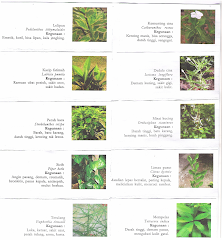
herba Kacip Fatimah
hempedu beruang
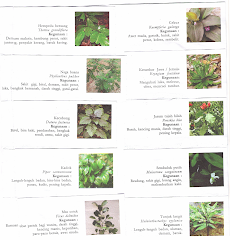
hempedu beruang
hempedu bumi

hempedu bumi
herba misai kucing

herba misai kucing
herba tongkat Ali
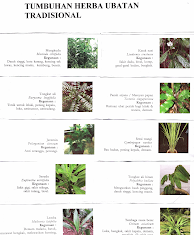.png)
Tongkat Ali
Ulama'

Ulama'
kapal terbang milik kerajaan negara ini yang dipakai pemimpin negara

kapal terbang
Adakah Insan ini Syahid

Syahid
Tok Ayah Haji Ismail

Saifuddin bersama Zakaria

Dinner....
Sukacita Kedatangan Tetamu
Pengikut
Kalimah Yang Baik

Ubi Jaga

Ubi Jaga
Arkib Blog
Burung Lang Rajawali

Chinese Sparrowhawk
Kelicap Mayang Kelapa

Brown-Throated Sunbird
Kopiah

Pokok Damar Minyak

Kacip Fatimah
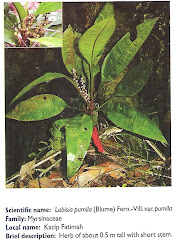
Mengkudu Akar
